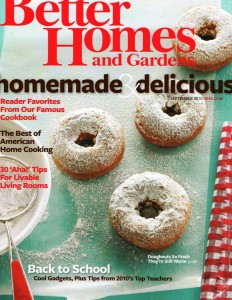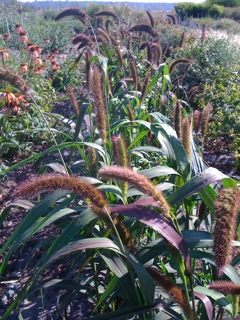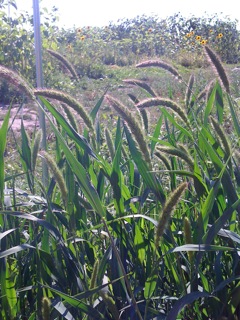 The September issue of Better Homes & Gardens features my “Debra’s Garden” column encouraging readers to add ornamental grasses to their seasonal flower arrangements.
The September issue of Better Homes & Gardens features my “Debra’s Garden” column encouraging readers to add ornamental grasses to their seasonal flower arrangements.
The photo that accompanies the piece depicts a gorgeous autumn bouquet bursting with asters, fall foliage and miscanthus blades.
Its sultry palette includes dark purple, russet-red, gold and green elements in a clear, glass vase. As a footnote, I promised to show off my favorite grasses for cutting and flower arranging here on this blog.
As it turns out, I’ve been seeing a lot of wonderful ornamental grasses and grass-like design ingredients lately. These days, I have dreamy plumes of fountain, feather, and silver grasses on my mind.
There’s something both completely romantic and purely modern about grasses in floral arrangements (or in the landscape, for that matter). Here’s a peek at what’s caught my eye this year, including my favorite grasses for cutting:
FROM THE FLOWER FARM
Owned by Diane Szukovathy and Dennis Westphall, Jello Mold Farm is one of my favorite local flower sources here in the Pacific Northwest. Diane and Dennis use sustainable practices and recently they’ve delighted floral design customers with gorgeous late-summer grasses. You can find Jello Mold Farm at the Queen Anne Farmers’ Market every Thursday – be sure to check out the incredible selection of downy and fluid grasses.
Here are a few show-stoppers included on Diane’s “fresh list” that she emails to customers every Monday. The four images you see here were taken by Diane:

Jello Mold's RED JEWEL MILLET, with large, elegant, arching, red-toned seed-heads approximately 5 inches long
These awesome examples are ornamental millets, not edible ones.
While actually cultivars of Pennisetum glaucum, you can almost convince yourself that they are relatives of the corn family if you squint.
When cut for bouquets, the plants yield both the sweet, furry seed-heads, as well as the strapping, wide leaf blades. Both plant elements are useful in an arrangement as beautiful counterpoints to blooms.
Like many good things, “more is better.” For example, I like to gather several seed-heads together in a clump and inset them into the arrangement.
It’s a pretty picture to have three to five seed-heads cascading out of a bountiful grouping of seasonal flowers and foliage.
READ MORE…










